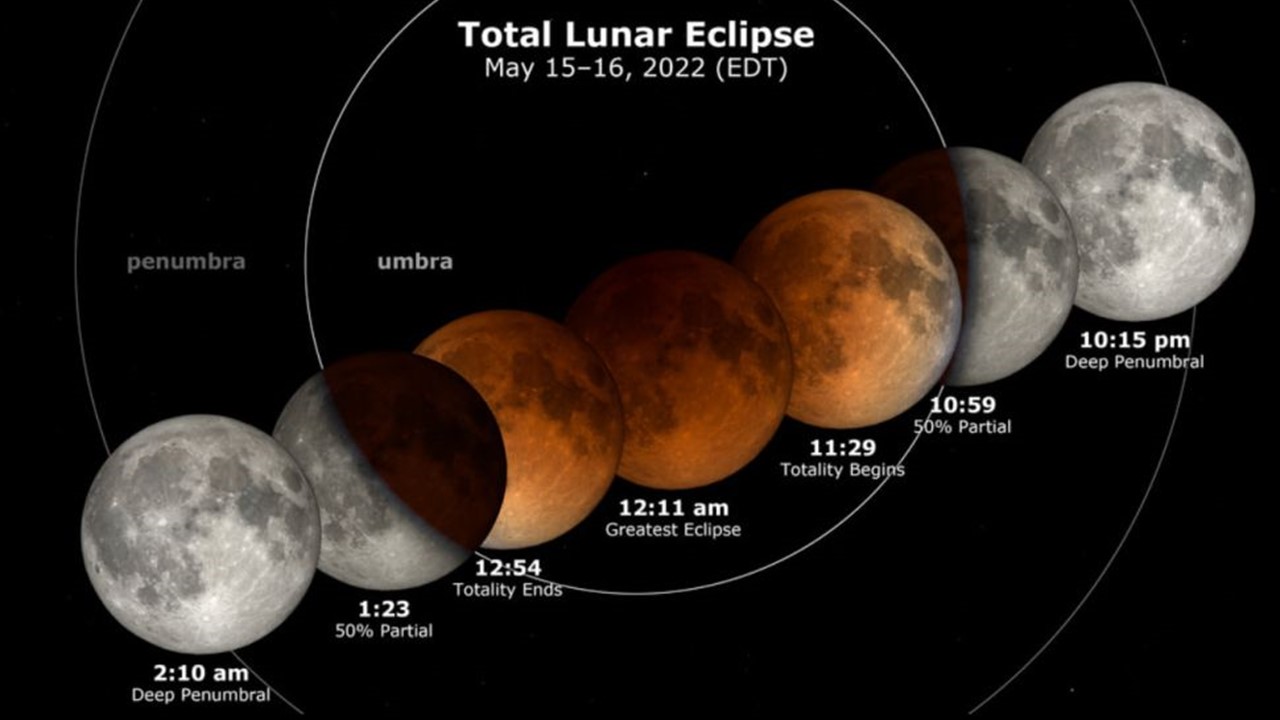A total lunar eclipse will grace the night skies this weekend, providing a longer than usual celestial action thrills for stargazers, unfolding Sunday night into early Monday morning.
The fact that this lunar eclipse occurs early in the day, after sunset on Sunday, May 15 makes it different. It's one of the earlier lunar eclipses in a long time, and safe to look at with the naked eye.
The sun, moon and Earth will align Sunday night for a total lunar eclipse on May 15, occurring when the Earth moves into place between the sun and the full moon. The moon will be 362,000 kilometers away at the peak of the eclipse, the average distance is usually 384,400 kilometers.
The Earth casts a giant shadow across the lunar surface, giving the moon a striking reddish hue, which is why the lunar eclipse is referred to as a blood moon. It's called the Super Flower Blood Moon because it's the month of May, when flowers are blooming.
The total lunar eclipse will be visible from portions of the Americas, Antarctica, Europe, Africa and the east Pacific. Meanwhile, a penumbral eclipse, where the outer part of Earth's shadow blankets the moon, will be visible in New Zealand, eastern Europe and the Middle East.
 This NASA graphic shows the major stages of the Super Flower Blood Moon of May 2022 and their times
This NASA graphic shows the major stages of the Super Flower Blood Moon of May 2022 and their times
Depending on one’s location, a partial lunar eclipse begins May 15 at 10:28 p.m. EDT (0228 GMT on May 16). The Blood Moon will reach its peak at 12:11 a.m. EDT (0411 GMT) on May 16 before the lunar eclipse ends at 1:55 a.m. EDT (0555 GMT). The penumbral moon phase of the eclipse will begin about an hour earlier and end about an hour after the partial eclipse, according to TimeandDate.com
Viewers lucky enough to be in the path of the lunar eclipse can witness the event from the outside.
NASA's will livestream the event starting at 9:32 p.m. on May 15 (0132 GMT May 16). It will include a discussion on eclipses, moon science and the agency's moon-landing Artemis program.
Slooh, an astronomy learning website, will begin their webcast on May 15 at 9:30 p.m. EDT (May 16 0130 GMT). TimeandDate plans to broadcast the entire lunar eclipse, weather permitting, starting at 10 p.m. EDT May 15 (0200 GMT May 16).
NASA’s asteroid-seeking Lucy spacecraft will photograph this weekend’s event from 64 million miles (103 million kilometers) away.
This will be the first of two lunar eclipses in 2022. The next one will take place on Nov. 8, 2022 and will be visible at least partially from Asia, Australia, North America, parts of northern and eastern Europe, the Arctic and most of South America.